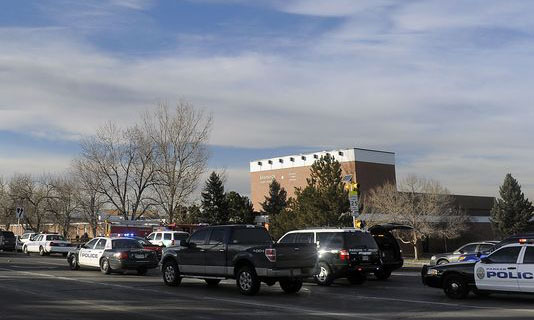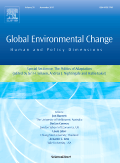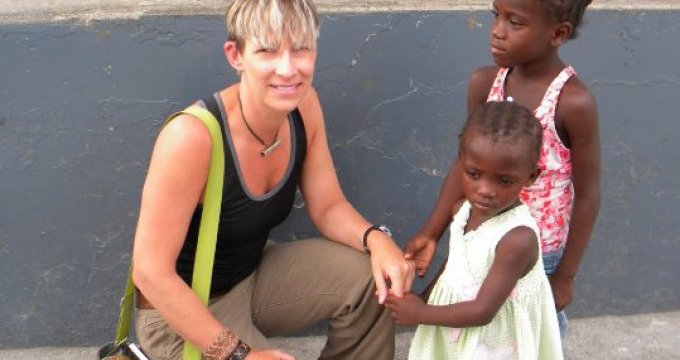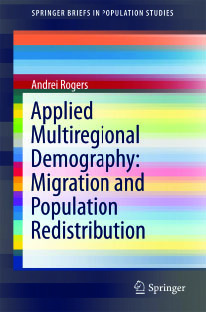CSPV's independent fact-finding report examining the events and circumstances leading to the 2013 fatal shooting at Arapahoe High School and offering recommendations for improvements in school safety is featured and discussed extensively in a CU Boulder News Center article. This report is an important work, deserving of much recognition and attention. The report is discussed in detail on the CSPV's Blueprints website, where you can also find a link to the report itself, along with supporting documents.
News
All news items, blog posts, and feature stories.
Strategic Planning for IBS
IBS is undergoing a Strategic Planning process designed to craft a vision for the future and pathways to achieve that vision. Over the next few month, the Strategic Planning Task Force will convene IBS faculty, staff, and students, as well as well as external constituents, to discuss topics important to the Institute’s future. The Task Force will synthesize the information gathered and generate a draft set of plans for public discussion by the end of spring semester, 2016. The Strategic Planning process is being facilitated by Elaine Kuttner of Cambridge Concord Associates (www.cambridgeconcord.com), who is an expert at working with organizations such as IBS. We look forward to receiving input – please write Myron Gutmann, IBS Director, with any questions (Myron.Gutmann@colorado.edu).
Lori Hunter Joins Global Environmental Change Editorial Board
Lori Hunter has accepted an invitation to join the Editorial Board of the journal Global Environmental Change.
Lori Hunter Speaks on Connections Between Climate, Migration, and Health at NYU
Lori Hunter was an invited panelist at a Tuesday conference at the Institute for Public Knowledge at NYU. The conference theme was “Will Climate Change Health?” and Lori spoke on the connections between climate, migration and health.
Rapid Growth in Elderly Inmate Population Raises Complex Policy Questions
December 15, 2015 •Social Sciences
While it may not be a surprise that the number of elderly inmates is growing in the United States, the pace of that growth and the complexity of the inmates’ health problems is posing new challenges to researchers, policymakers and correctional employees.
A University of Colorado Boulder paper published online in the Journal of Aging and Health in November reported that the number of people in the U.S. inmate population aged 55 and older is expected to increase a remarkable 4,400 percent in the period from 1980 to 2030, far outpacing growth of older adults in the general population. According to the most recent available data, there are more than 124,900 prisoners aged 55 and older behind bars in the U.S. compared to just 8,853 in 1981.
The researchers found that the percentage of older adults with two or more chronic medical conditions also significantly increased over the previous decade.
“The presence of multiple chronic conditions increases the complexity of disease management, and the combination of diseases presents challenges to healthcare systems both in improving quality of life and expenditures for an aging population,” said Kathryn Nowotny, lead author and a doctoral student in CU-Boulder’s sociology department at the time of the study.
Nowotny pointed out that it costs an average of $34,000 per year to house a prisoner but that figure doubles to $68,000 per year for a prisoner who is 50 or older. Those same elderly inmates are at lower risk of repeat offenses than younger inmates.
Most research thus far has focused on the health of incarcerated adults in terms of a single medical condition or disease, she said.
“In this paper we wanted to examine the presence of multiple chronic conditions along with other conditions including infectious disease, functional impairments and mental and behavioral health,” said Nowotny, soon to begin a post as assistant professor of sociology at Miami University.
Inmates have such worse physical and mental health outcomes than their peers in the general population that age 50 is used to define “elderly” as opposed to age 65 outside, according to the study. This is due to poor diet, stress and drug and alcohol abuse, as well as factors such as head trauma, poor health care, low educational attainment and socioeconomic status.
But what surprised Nowotny most was the representation of veterans among the aging male inmate population the researchers studied.
“When we looked at the health profiles and specifically the group of the most unhealthy inmates, half of them were veterans,” Nowotny said. “Given the time of data collection and the age of the inmates, it appears these are Vietnam War-era servicemen. It is something that warrants further attention.”
The paper also examined the ability of elderly male inmates to engage in daily living activities. The current study found that on average 12 percent of elderly inmates required an aid for daily living such as a cane or walker but that percentage is higher (24 percent) for the most unhealthy inmates. Previous research shows that 69 percent of inmates ages 50 and older said they struggled with at least one activity such as dropping to the floor for alarms, standing for count, getting to meals, hearing orders and climbing to a top bunk.
The growth in the number of aging prisoners is the result of multiple trends, including the nation’s war on drugs and its harsher penalties for those arrested on drug charges. In fact, the majority of older adults in prison are serving sentences of 20 years or more for drug and other nonviolent crimes, Nowotny said.
Nowotny said there are no consistent protocols from state to state to address the needs of aging inmates in the country that tops the global list for incarceration at 2.3 million.
“Moving forward, as the population continues to age, we need to think about living environments for non-able-bodied people, and think about better integration of services in prison,” Nowotny said.
The research was funded by the CU-Boulder Population Center and a National Institutes of Health predoctoral fellowship.
– See more at: http://www.colorado.edu/news/features/rapid-growth-elderly-inmate-population-raises-complex-policy-questions#sthash.NDPu8lnQ.dpuf
“Invisible While in Plain Sight” Accepted for Publication
A new research article by Nnenia Campbell, Lucy McAllister and Liam Downey, “Invisible While in Plain Sight: The World Bank in the New York Times”, has been accepted for publication in the journal, Sociology of Development.
Hazards Library Online Catalog Up and Running
The new Natural Hazards library catalog interface is now online! It’s got lots of great new features and the Hazards Center and the IBS tech team have worked super hard to create it. Read more here: http://www.colorado.edu/hazards/dr/archives/dr651.html#three
Access the library directly here: http://hazlib.colorado.edu/
Community Resilience Planning Important for Natural Hazards Recovery
October 30, 2015 • Social Sciences, Outreach
If you’re not directly involved in the realm of natural and human-caused disasters, a small news item may have escaped notice last week: The U.S. Commerce Department’s National Institute of Standards and Technology’s publication of its first comprehensive community resilience planning guide.
But for Liesel Ritchie, associate director of the Natural Hazards Center at the Institute for Behavioral Science at CU-Boulder, the announcement marked an important milestone in helping policymakers and community leaders understand the importance of social science in disaster planning.
Ritchie became involved with the community resilience project as one of nine fellows one year ago. Her job was to provide valuable perspective on the social dimensions of disaster – something that had not previously been extensively covered in the guide.
The most recent Community Resilience Planning Guide for Buildings and Infrastructure Systems was created to help U.S. communities better withstand and rebound from the shocks of severe weather, earthquakes, and other natural and human-caused hazards.
“I helped to facilitate understanding of community processes and how different social institutions—including family, economic, government, health, education, community service, religious, cultural and media organizations—rely upon the built environment and infrastructure systems on a day-to-day basis,” Ritchie said.
She also highlighted resilience-related concerns specific to vulnerable populations, including the elderly, people living in poverty, racial and ethnic minority groups, people with disabilities and those suffering from chronic illness.
The guide was issued on the third anniversary of Hurricane Sandy, which killed 157 people in the U.S. and wreaked havoc and destruction from Maine to North Carolina. It is aimed at community leaders in both the public and private sectors, and lays out a practical six-step process that communities can follow to develop resilience plans to help them prepare for hazards, adapt to changing conditions and withstand and rapidly recover from disruptions.
“This work is important because it is one of the first resilience efforts to provide a systematic approach for communities to assess both their social institutions and built environment in a coordinated way,” Ritchie said.
The guide could prove useful to Colorado, a state that faces numerous hazards ranging from flooding to wildfires.
“Given the breadth of impact extreme weather is having on American lives and commerce, it is clear that we have to do more to mitigate its effects,” said U.S. Commerce Secretary Penny Pritzker. “Improving local resilience efforts are a challenge that every city should address, and this planning guide can assist communities in developing preparedness plans to prevent hazards from becoming disasters.”
To access the guide, an FAQ, and an overview document called Guide at a Glance, go to http://www.nist.gov/el/resilience/guide.cfm. To read a feature story on the planning guide and other complementary NIST community resilience efforts, go to http://nist.gov/el/helping-to-build-a-nation-of-resilient-communities.cfm.
Andrei Rogers Migration Book Published
Andrei Rogers' latest book has just been published: "Applied Multiregional Demography: Migration and Population Redistribution", (Dordrecht: Springer), 2015.
This book reconsiders conclusions reached in the literature
regarding several fundamental common sense demographic
questions in migration and population redistribution, including:
Are the proximate sources of urban population growth mostly
due to migration or natural increase? Is it mostly migration or
“aging-in-place” that has been driving Florida’s elderly
population growth? Do the elderly return “home” after
retirement more than the non-elderly do? Are the migration and
settlement patterns of the foreign-born different from those
of the native-born? Do simple poulation projection models
outperform complex ones? Does longer life lead to longer
ill-health?
For each demographic question it reconsiders, the book
illustrates how an inappropriate model specification can bias
findings to favor a possibly incorrect conclusion. It shows how
a multiregional analysis can better illuminate the dynamics that
underlie the observed population totals and lead to a more
informed conclusion.









